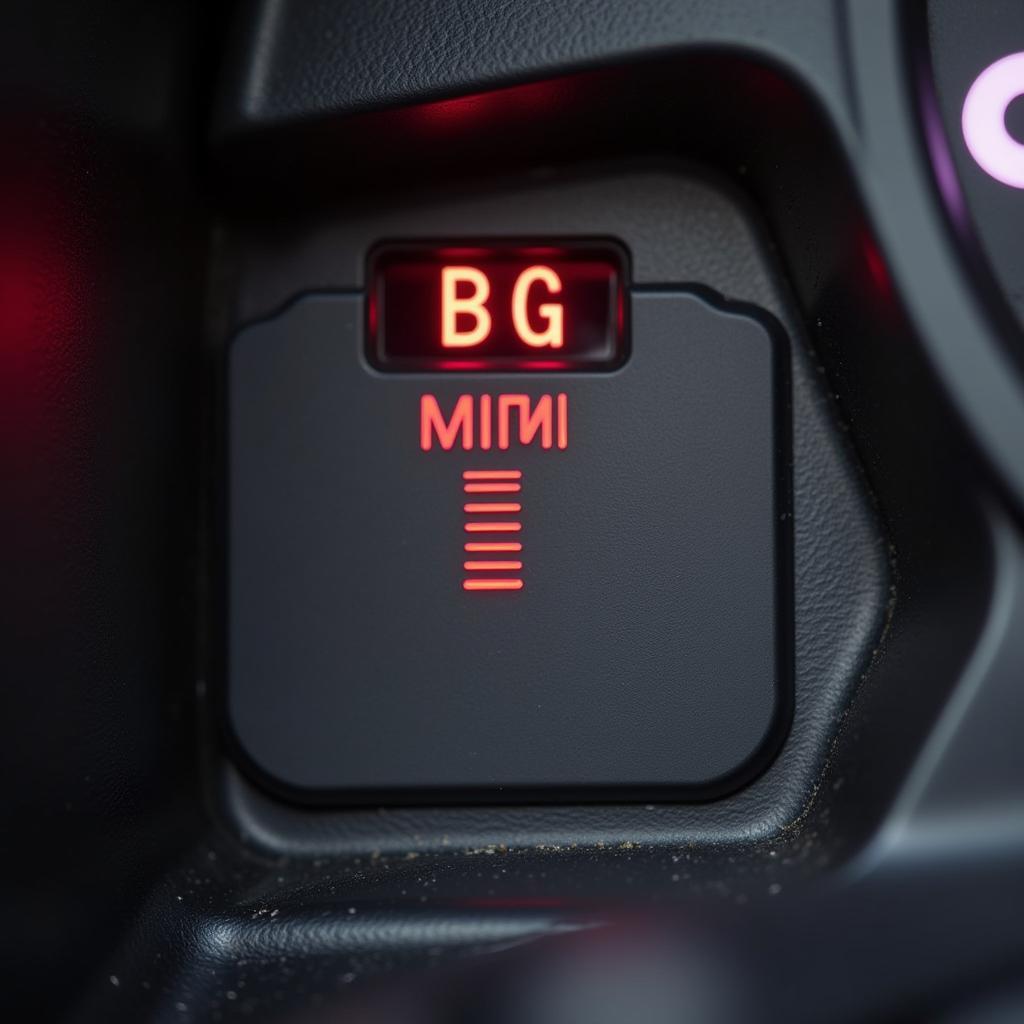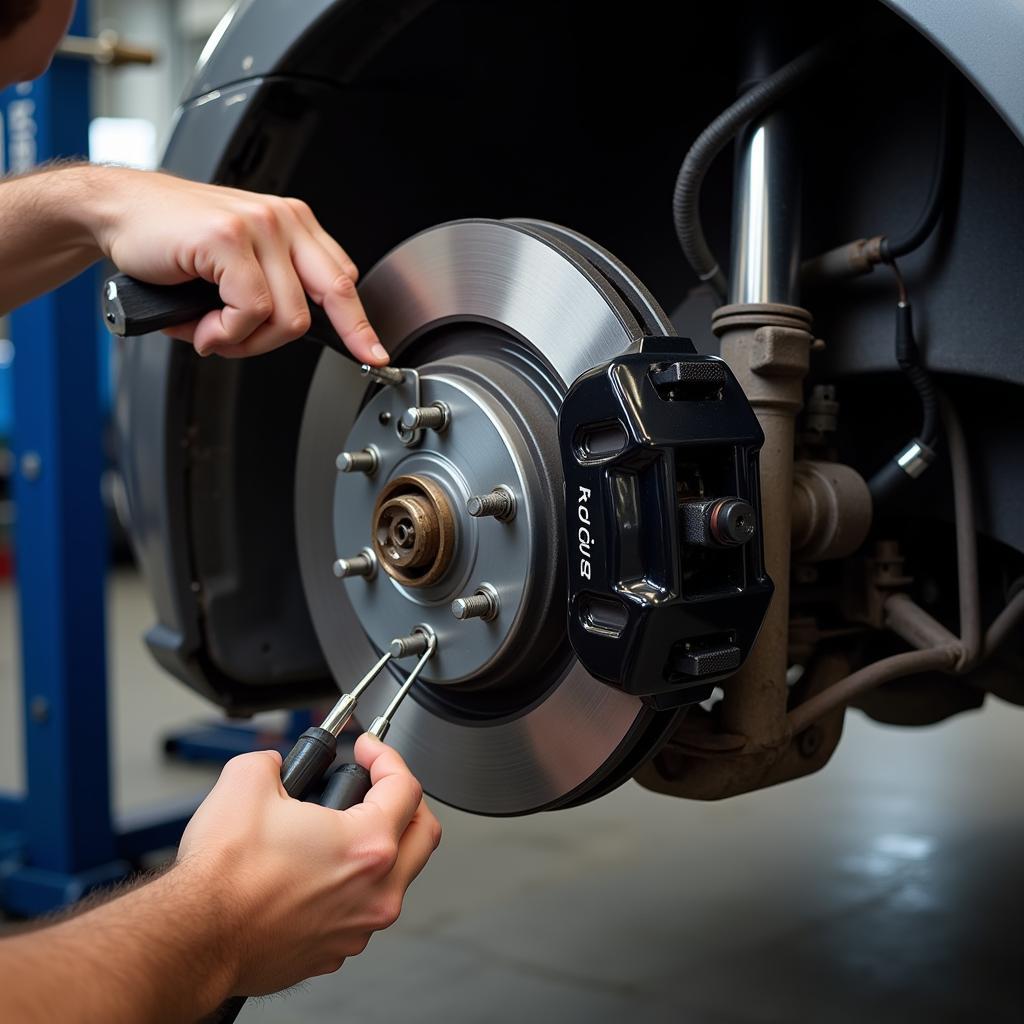Driving along and suddenly you see a yellow or red triangle light up on your dashboard, often accompanied by the word “BRAKE” or an exclamation mark within the triangle itself. This, my friends, is your car’s way of saying “Hey! We need to talk about the brakes!” But what exactly is it trying to tell you?
Understanding Your Car’s Warning System
Modern vehicles are equipped with sophisticated self-diagnostic systems that constantly monitor various components, including your brakes. When something isn’t quite right, these systems trigger warning lights on your dashboard to alert you to potential problems. Ignoring these warnings could lead to dangerous situations on the road.
Deciphering the Brake and Triangle Warning Light
The brake and triangle warning light, often illuminated in yellow or red, indicates an issue with your braking system. Let’s break down the possible culprits:
1. Engaged Parking Brake
The most common and usually benign reason for the light is an engaged parking brake. Before panicking, ensure your parking brake is fully released. If the light turns off, you’re good to go!
2. Low Brake Fluid Level
Brake fluid is the lifeblood of your braking system, transmitting the force from your foot on the pedal to the brake calipers, stopping the vehicle. A low brake fluid level can significantly reduce braking performance and is a serious safety concern.
 Low Brake Fluid Reservoir
Low Brake Fluid Reservoir
3. Worn Brake Pads
Brake pads are designed to wear down over time. When they become too thin, the brake pad wear indicator will trigger the warning light. Driving with worn brake pads compromises your ability to stop effectively and can damage other brake components.
4. Faulty Brake System Sensors
Modern braking systems rely on sensors to monitor various aspects, including wheel speed, brake fluid level, and brake pad wear. A malfunctioning sensor can trigger a false warning light, even if there’s no actual problem with your brakes.
5. ABS or Electronic Stability Control (ESC) Issue
The brake and triangle light may also illuminate if there’s a problem with your Anti-lock Braking System (ABS) or Electronic Stability Control (ESC). These systems are crucial for maintaining control of your vehicle during emergency maneuvers.
What to Do When the Light Turns On
- Don’t Panic: First and foremost, remain calm.
- Assess the Situation: If you’re driving, safely pull over to a safe location.
- Check Your Parking Brake: Ensure it’s fully disengaged.
- Inspect Brake Fluid Level (If Safe): If you’re comfortable, check the brake fluid level in the reservoir.
- Proceed with Caution (If Necessary): If the light is yellow and you suspect a minor issue like a slightly low brake fluid level, drive cautiously to a nearby mechanic or auto parts store.
- Seek Professional Help: If the light is red, flashing, or accompanied by other warning lights, or if you notice any unusual braking behavior like a soft or spongy brake pedal, it’s crucial to have your vehicle towed to a qualified mechanic for immediate inspection and repair.
“Ignoring brake warning lights is like ignoring a toothache – it might seem manageable at first, but ignoring it can lead to far more painful and expensive problems down the road,” says John Smith, Senior Automotive Technician at ABC Auto Repair.
Preventing Brake Problems
- Regular Maintenance: Adhere to your vehicle manufacturer’s recommended brake inspection and maintenance schedule.
- Quality Brake Pads: Invest in high-quality brake pads from reputable brands.
- Brake Fluid Flush: Have your brake fluid flushed and replaced every 2-3 years or as recommended by your vehicle manufacturer.
- Mindful Driving Habits: Avoid hard braking whenever possible and anticipate stops to reduce wear and tear on your brakes.
 Brake System Inspection
Brake System Inspection
Conclusion
The brake and triangle warning light is a crucial safety feature in your vehicle. Understanding its meaning and reacting appropriately can save you from potentially dangerous situations and costly repairs. Never ignore this warning light. Address it promptly to ensure the safety of yourself, your passengers, and other road users.
FAQs
-
Can I drive with the brake warning light on? It depends. If the light is yellow and you suspect a minor issue, you may drive cautiously to a mechanic. However, a red or flashing light indicates a serious problem, and you should have your vehicle towed for safety.
-
How much does it cost to fix a brake warning light issue? The cost varies depending on the underlying cause. A simple brake fluid top-up is inexpensive, while replacing major brake components can be costly.
-
How often should I check my brake fluid? It’s good practice to check your brake fluid level at least once a month and more frequently if you notice any changes in your brake pedal feel.
-
Can I add any type of brake fluid to my car? No, use only the type and DOT rating specified in your vehicle’s owner’s manual. Using the wrong fluid can damage your braking system.
-
What is the difference between a yellow and red brake warning light? A yellow light typically indicates a less severe issue, while a red light signals a serious problem requiring immediate attention.
For more information on specific car warning lights, check out our articles on seat ateca warning lights, 2008 prius brake switch warning lights, brake pads audi warning, and trailer brake system warning light. If you are experiencing issues with your BMW, you might find our article on bmw e46 dsc and brake warning light helpful. Remember, understanding your car’s warning signals is crucial for safe driving.

